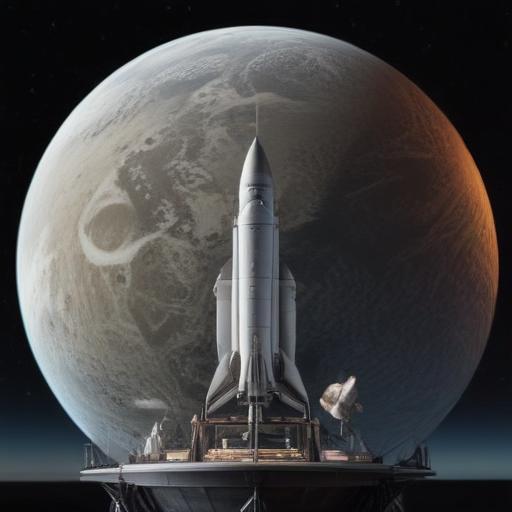Summary: Interim NASA administrator Sean Duffy is pushing Artemis amid political funding battles and evolving international space diplomacy, with timelines for Artemis II in 2026 and Artemis III projections under debate.
Sean Duffy, named to take the helm at NASA on an interim basis after President Trump withdrew his nomination of Jared Isaacman, is steering the agency through a period of political and strategic turbulence while starring Artemis as the agency’s centerpiece.
Duffy has been vocal online and in interviews about uniting agency leadership around Artemis, the roadmap to returning astronauts to the Moon, and ultimately reaching Mars. He told followers he spoke with senior leaders across mission directorates and stressed that America must lead in space and that Artemis should enjoy broad recognition and support akin to the Apollo era. He also signaled his readiness to move forward with the program, saying he’s “fired up and ready to launch.”
In a televised appearance on Fox News, Duffy outlined Artemis as a three-phase effort: return to the Moon, establish a lunar outpost, and conduct crewed expeditions to Mars. He appears to be betting that Artemis remains politically appealing, with a hoped-for schedule that keeps the program on track. Artemis II, the crewed lunar flyby, is targeted for early 2026.
Yet not everyone is buying the timeline. Science journalist Robert Zimmerman pushed back on Duffy’s claim that Artemis III—the subsequent Moon landing—remains on track for 2027, especially in light of ongoing issues with SpaceX’s Starship. SpaceX chief Gwynne Shotwell has publicly supported Duffy’s timeline, but skeptics remain, and observers are watching how risk and delay could affect the plan.
Duffy has also advocated bold technical ambitions, including deploying a 100‑kilowatt nuclear reactor on the Moon by 2030 to power a lunar base, and accelerating the development of commercial space stations intended to replace the aging International Space Station when its life concludes. The proposals would mark a significant shift in how NASA partners with the private sector and how it plans long-term in-space infrastructure.
Beyond Artemis, Duffy sat down at the Kennedy Space Center with Roscosmos chief Dmitry Rogozin? (Roscosmos counterpart) to discuss cooperation on lunar programs, joint deep-space exploration, and ISS collaboration. The dialogue underscores the ongoing willingness to keep space as a venue for international collaboration even amid broader geopolitical tensions.
Arms-length discussions about Russia’s role in space come as Russia has shown reluctance to participate in Artemis, favoring cooperation with China on its own planned Lunar Research Station. The conversations reportedly touched on potential Russian hardware usage for ISS deorbit planning in 2030, a reminder of the high-stakes bargaining surrounding space infrastructure and funding.
Back home, NASA faces a funding squeeze that could determine its near-term trajectory. A group of Democratic senators asked Duffy for clarity on proposed cuts for the next fiscal year and on plans to rescind some current-year funding, along with a controversial buyout proposal to reduce about 4,000 NASA civil servants. Lawmakers want answers by Sept. 1 as they scrutinize how the agency intends to implement spending in the omnibus legislation touted by supporters as the “big, beautiful bill.”
The funding conversations illustrate why many observers say NASA needs a permanent administrator who can command cross-branch respect and keep long-range space goals on course. Without stable leadership, officials warn, even well-intentioned plans like Artemis could lose momentum amid political and budgetary headwinds.
For observers and space policy enthusiasts, Duffy’s tenure represents a pivotal moment: Artemis as a rallying point for national leadership in space, the potential for new kinds of international cooperation, and a test of whether Congress and the White House can align behind a coherent, ambitious space program.
Commentary and context:
– Artemis’s success hinges on realistic scheduling and steady funding, not just ambition. The tension between congressional budgeting cycles and executive priorities will shape how far and how fast the agency can push its plans.
– International cooperation remains a strategic lever. Dialogue with Roscosmos shows that even amid geopolitical strain, space remains a practical arena for collaboration, though the path to a broader Artemis-like partnership with Russia is far from certain.
– The push toward lunar infrastructure (powered by a lunar reactor and commercial space stations) signals a shift toward sustained presence beyond the brief lunar sorties of earlier programs, with potential implications for tech development, private-sector investment, and future deep-space missions.
If you’re looking for a short takeaway: Duffy’s leadership era is defined by a renewed Artemis push, high-stakes budgeting debates, and a delicate dance of international cooperation that could redefine how the United States and its partners pursue lunar and deep-space exploration.
Additional notes for editors:
– Verify quotes and timelines (Artemis II in 2026; Artemis III timeline and SpaceX reliability) to ensure accuracy before publishing.
– Consider including a side box with a quick Artemis timeline and the current funding challenges to help readers understand the stakes.
– Maintain balanced framing around Russia’s space ambitions and their relationship to Artemis to avoid overinterpretation of political motives.
– If possible, link to or summarize the broader debate in Congress about NASA’s budget and staffing to give readers a sense of the legislative context.
